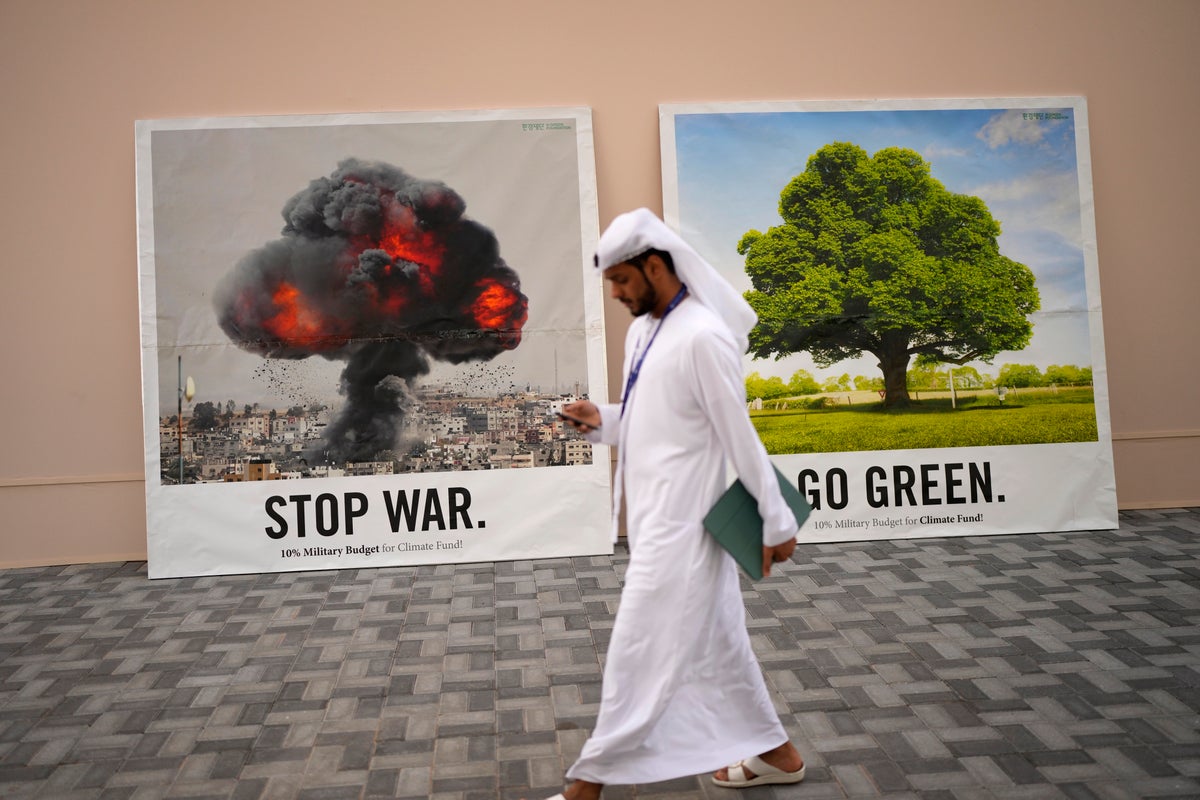
Almost every day at COP28, this year's annual United Nations climate summit, an activist dons a costume of a dugong — a manatee-like creature that forages for seagrass in warm, shallow areas of the Indian and Pacific oceans.
The costume highlights the contrasts of climate talks marked by both spectacle and urgency, at a site that cost billions of dollars to erect, in what was once just an empty desert area of the oil-rich host country, the United Arab Emirates.
For nearly two weeks, Expo City has been the site of discussions about climate change and how to confront it. Between the meetings among thousands of delegates, there is a lot for them, and other attendees, to look at as they go from place to place.
A mural of women farmers, smiling as they work. Art installations, like a wall with hands holding cell phones. Post-it notes — pink, green, blue and yellow — with messages stuck to a wall.
Men in suits walk quickly through large halls while others, wearing white thobes, ride electric scooters outside. At nearly every turn, there is something colorful, or artistic, to stop and look at or simply gather a glimpse of while passing by.
At the center of the venue, in the Al-Wasl plaza, a massive dome lights up and projects sounds and colors in an immersive landscape. It’s a man-made structure that can mimic the real splendor of ocean bioluminescence or a sky scattered with stars.
Conference attendees wander between a grand theater and two big plenaries and rows of meeting rooms, where world leaders, industry executives, activists, researchers and other stakeholders are holding panels and talks on everything from renewable energy to sustainable agriculture.
Beyond the confines of Expo City, climate change is happening, bringing urgency to the talks happening inside. So a central question is what this summit — with its futuristic aesthetics, its contradictions and its conversations amongst people from nearly 200 countries — will do about it.







